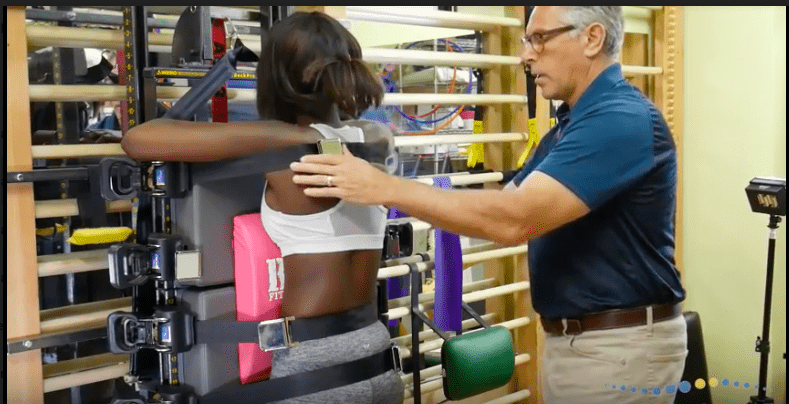CONTINUING EDUCATION
Introduction to Neuroskeletal Applications
Level 1- Scoliosis Deformity
Online Live Streaming- April 14-16 2023 or LIVE at the Clinicube 39 W 29th ST NY NY 10001 (11th Floor)
Click on Link to Register
COST- $795
Marc J. Lamantia B.S.,M.S., D.C. Diplomate of the ACNB 2006-2011
MS in Neuropsychology Rehabilitation
(Contact Northeast College of Health Sciences)
|
|
||
| Scoliosis Etiopathology and Evolutionary Genetics
Scoliosis is an entire entity phenomenon which goes far beyond the curvature of the spine. The scientific literature provides a breadth of knowledge regarding etiopathology that will provide a framework for our approach to non-surgical interventions. |
||
| Evolutionary Perspective on Scoliosis
Scoliosis is a uniquely human condition. The Science of evolutionary biology sheds light on how and why our bodies fail into disease states. |
||
| The New Science of Neuroskeletal Biology
The term neuroskeletal biology was coined in 2007. The Scientific evidence supports the concepts that bone is a target tissue of the nervous system, and that the autonomic N.S. is directly responsible for the deformity of bone associated with scoliosis. |
||
| Autonomic influence on Bone Asymmetry
Bone is a known target organ of the nervous system, but it has not been until recently that the mechanism by which the cns communicates with bone has been identified. Via sympathetic pathways, neuropeptides are responsible for bone asymmetry. |
||
| NSB-Scoliosis as a Whole Organism Phenomenon
Scoliosis in not only a curvature of the spine, it involves the connective tissues and is now considered an entire organism Phenomena. CNS imbalances commonly seen in Scoliosis. |
||
| Evolutionary Liabilities of the Spine
Evolutionary medicine provides a framework by which skeletal liabilities can be identified and targeted for treatment. |
||
| Break | ||
|
||
|
||
| Introducing Neuroskeletal Scoliosis Phenotypes
Scoliosis is not all the same. Some patients are hyperflexible due to ligamentous laxity, while others have low muscle tone. Treatment interventions are based on these difference. These categories are subtypes of Idiopathic Scoliosis. Primary muscle disease, neurogenic scoliosis of known origin, trauma, or secondary scoliosis are not considered here. |
||
| Movement Disturbances Contributing to Scoliosis Progression Movement disturbances contributing to Scoliosis progression. Assess Active ROM Passive ROM, Resisted ROM, Coupled motions of the spine. Pelvic Stability, Upper Cervical Assessment. | ||
| Autonomic Dysfunction Sympathetic escape vs. Parasympathetic activity. Neuroskeletal biology confirms sympathetic connections responsible for bone deformity in scoliotic curvatures. | ||
| CNS dysfunction (Cortical)
The brain, has been shown to be involved in Scoliosis. Identifying Sensory Disturbances, Vestibular Perceptual changes, Cortical hub changes can help direct more appropriate neuroskeletal interventions. The Insular Cortex revealed. |
||
| CNS dysfunction (Cerebello-vestibular)
The vestibulocerebellar system is implicated as a factor which is present even before the spinal deformity emerges. Cerebellar deficits may respond to specific rehabilitation methods and can improve postural integrity in an otherwise unstable spinal column. Vestibulospinal and vestibulocular reflexes are explored. |
||
| Metabolic Dysfunction
Scoliosis is a problem with bone, ligament, blood platelets, hormones, digestive, nervous and muscular systems. Scoliosis patients have been shown to have early onset Osteopenia, low BMI and anorexia, vitamin and mineral deficiencies and other conditions related to metabolic health. |
||
| Diagnostic and Treatment Algorithm
Non-surgical management of scoliosis is specific to the patient’s needs, individual clinical findings and the desired clinical goals of both the patient and the clinician. Scoliosis typing is an important concept for clinicians to understand in order to better tailor clinical interventions to the individual. Epigenetic Exercise, Low Intensity Interval Training, Zone 2 Cardiovascular Exercises. Isometrics, Dynamic Movement Control. |
||
| Adult Scoliosis- Mechanisms of pain
Sympathetically maintained pain vs. Chronic Micro-trauma Pain is approached as a cortical event that may or may not involve end organ pathology. Assessment of brain based mechanisms of pain are essential to differentiate possible etiologies. |
||
| Mechanical Load Profiles in Natural Environment
Movement as a therapy for scoliosis, hacking the natural environment. Mechano-biology, Heuter Volkman, Osteocyte Biology |
||
|
||
|
||
| Mechanobiology
This discipline of Biology is important in our clinical management strategies. |
||
|
||
| Break | ||
Neuromuscular Rehabilitation for Pain
|
||
| Risk Management- Referred Pain
Abdominal aortic aneurysms Herniated discs and arthritides Questions/Answers
|

